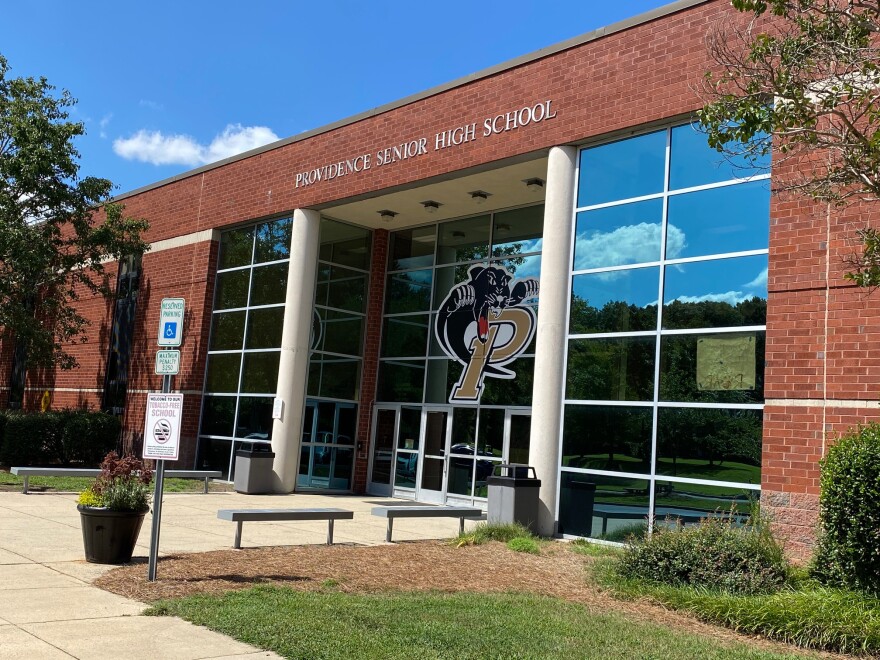North Carolina’s school growth scores stem from a complex calculation performed by SAS analytics in Cary.
Each student’s year-end scores are compared with projections based on previous years’ performance, and that’s turned into a number that has little meaning to a layperson. A school where every student perfectly matched projections would rate a zero. Anything above two is considered exceeding growth, and anything below negative two means the school did not meet growth targets.
This year’s numbers ranged from a high of 16.75, for Hawfields Middle School in Alamance County, to a low of negative 14.2 for Grantham Middle School in Wayne County.
Those numbers are translated to scores from 50 to 100, to be used for calculating school performance grades. Thirty-seven of 2,596 North Carolina district and charter schools earned growth scores so high they translated to a perfect 100. That counts for 20% of the school’s letter grade, with an achievement score that combines results on all tested subjects accounting for 80%.
Here are the Charlotte-area schools that earned perfect growth scores:
CMS
- Providence High, a neighborhood school in south Charlotte where 13% of students are economically disadvantaged, was No. 2 in the state. It received an A, with an achievement score of 89.5.
- Ardrey Kell High, a south Charlotte neighborhood school where 14% of students are economically disadvantaged, was fourth in the state. It also got an A, with an achievement score of 88.
- Coulwood STEM Academy is a northwest Charlotte middle school with a 59% economically disadvantaged rate, which qualifies it for federal Title I aid to high-poverty schools. It ranked seventh in the state for growth (it was second in 2022). With an achievement score of 55, it earned a C.
- Jay M. Robinson Middle is a south Charlotte neighborhood school where 15% of students are economically disadvantaged. It got an A with an achievement score of 86.6 and was 20th in the state for growth.
- Nations Ford Elementary is a Title I neighborhood school in southwest Charlotte with 48.5% of students economically disadvantaged. It was 22nd for growth, but with an achievement score of 36.8 it rated a D.
- Paw Creek Elementary is a Title I neighborhood school in northwest Charlotte, with 56% of students economically disadvantaged. It was 25th for growth and had an achievement score of 59, resulting in a C.
- Renaissance West STEAM Academy is a neighborhood pre-K-8 school in west Charlotte. It qualifies for Title I aid with 75% of students economically disadvantaged. It was 29th for growth and rated a D, with an achievement score of 38.5.
- Bailey Middle School is a neighborhood school in Cornelius, where 21% of students are economically disadvantaged. It’s 34th in the state for growth and had an achievement score of 77.9, coming to a B.
Gaston County
- Highland School of Technology is a magnet high school in Gastonia, with 29% of students considered economically disadvantaged. It was 17th for growth and had an achievement score of 99.6, which meant that combined with growth it got a perfect overall ranking of 100.
- Bessemer City Middle is a Title I school with 67% of students economically disadvantaged. It was 27th for growth and had an achievement score of 46, for a C grade.
- Cramerton Middle has an economically disadvantaged level of 38% and ranked 33rd for growth. Its achievement score of 79.2 brought it to a B.
Cabarrus County
- Harris Road Middle, a Concord school where 16% of students are economically disadvantaged, ranked eighth in the state for growth. It earned an A with an achievement score of 84.2.
- Hickory Ridge Middle in Harrisburg has an economically disadvantaged level of 17%. It ranked 26th for growth and had an achievement score of 82, with an A grade.
Union County
Cuthbertson High in Waxhaw ranked ninth for growth, with 8.5% of students classified as economically disadvantaged. It got an A, with an achievement score of 88.1.


